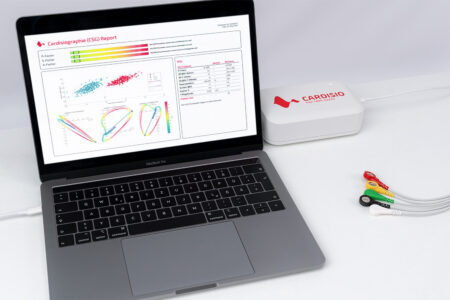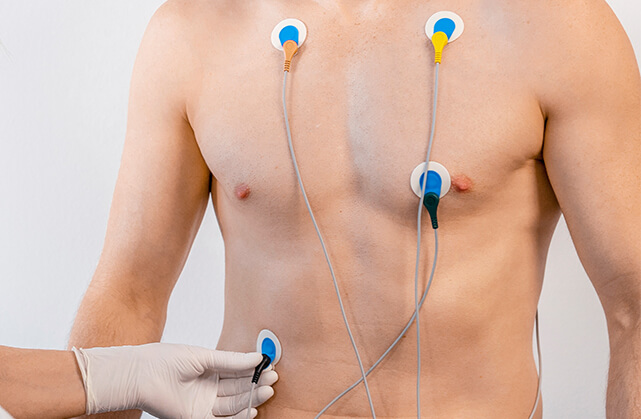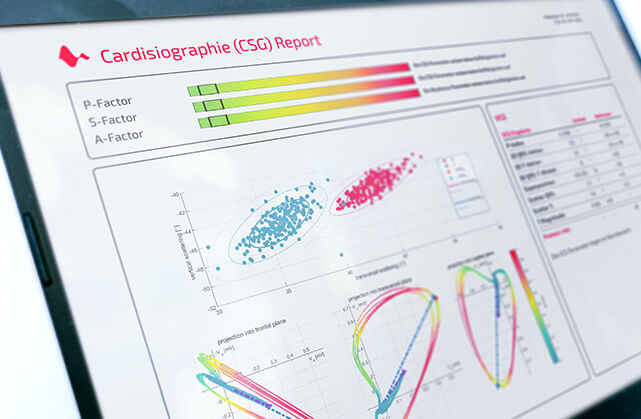The New Standard in Heart Screening
Why Cardisiography? Until now, quick identification of heart diseases was incredibly expensive, and a complicated process. We have changed that. Cardisiography is the first preventive screening that reliably detects heart diseases with the help of artificial intelligence. It provides an effective and precise heart checkup quickly and easily. An ECG or stress ECG is only of limited value in detecting circulatory disorders in the heart muscle. Within a few minutes, Cardisiography indicates, with very high accuracy, whether the heart is healthy!

Cardisiography is as easy to use as an ECG, but measures the heart muscle in three-dimensional space. The measured values are evaluated using a specialized AI algorithm. This provides clarity as to whether the heart is diseased or if a heart attack could be imminent.
Cardisiography is non-invasive, which means that electrodes are attached to the body for the screening; no needles or syringes are inserted into the body. This makes Cardisiography risk-free and suitable for any adult, regardless of age or health condition. Most people affected by heart disease are completely asymptomatic until severe symptoms such as a heart attack occur. A Cardisiography makes it possible to assess anyone’s risk of having a heart attack. It’s an easy way to keep track of your heart health without much hassle!
Data protection is taken very seriously: Only data that is necessary for the examination is recorded, e.g. age and weight. Other private data, such as name or address, are not entered into the system, and remain anonymous.
Important to note: Even if Cardisiography detects an abnormality, this does not automatically imply an acute emergency. Because of Cardisiography’s unprecedented accuracy, it detects heart diseases much earlier than comparable methods. Therefore, dangerous outcomes can still be actively prevented at this stage.
Through early detection, serious consequences can be avoided and the affected person is sent for further examinations, e.g. a heart MRI. This usually allows providers to quickly find the cause of the disease. Through timely diagnosis and good treatment, e.g. with medication or minor surgery, dangerous consequences, such as a heart attack, can be prevented. Cardisiography serves as a decision-making aid for the treating physician in the early diagnostic phase and enables early choices regarding the right treatment path. That is why preventative cardiac screening is so important.
*Braun T, Spiliopoulos S, Veltman C, Hergesell V, Passow A, Tenderich G, Borggrefe M, Koerner MM. Detection of myocardial ischemia due to clinically asymptomatic coronary artery stenosis at rest using supervised artificial intelligence-enabled vectorcardiography – A five-fold cross validation of accuracy. J Electrocardiol. 2020 Mar-Apr;59:100-105. doi: 10.1016/j.jelectrocard.2019.12.018. Epub 2020 Jan 8. PMID: 32036110.







